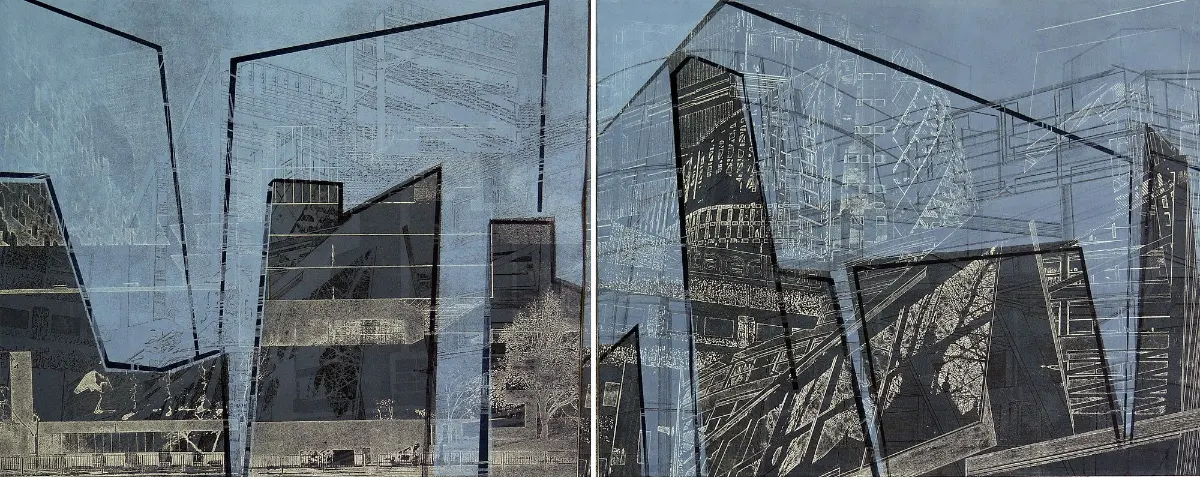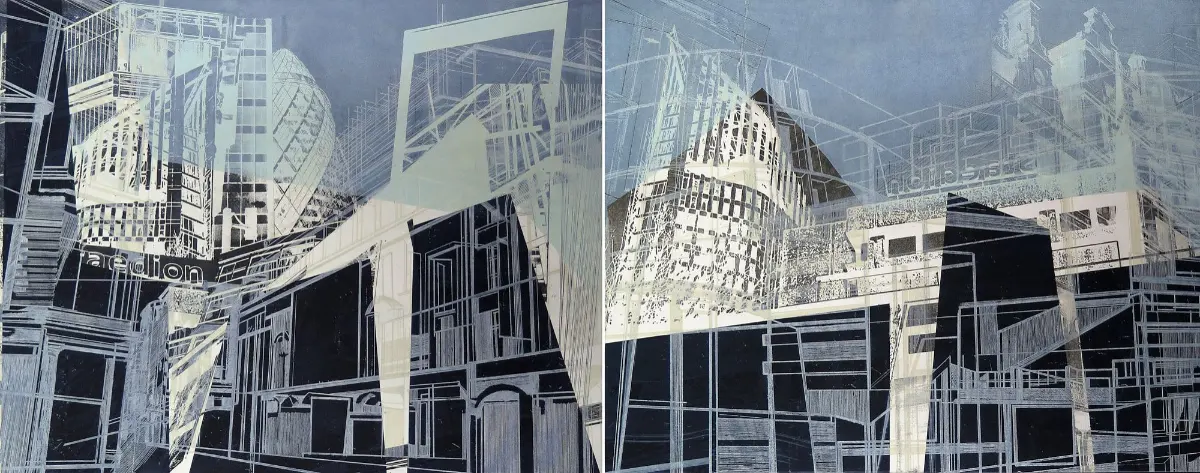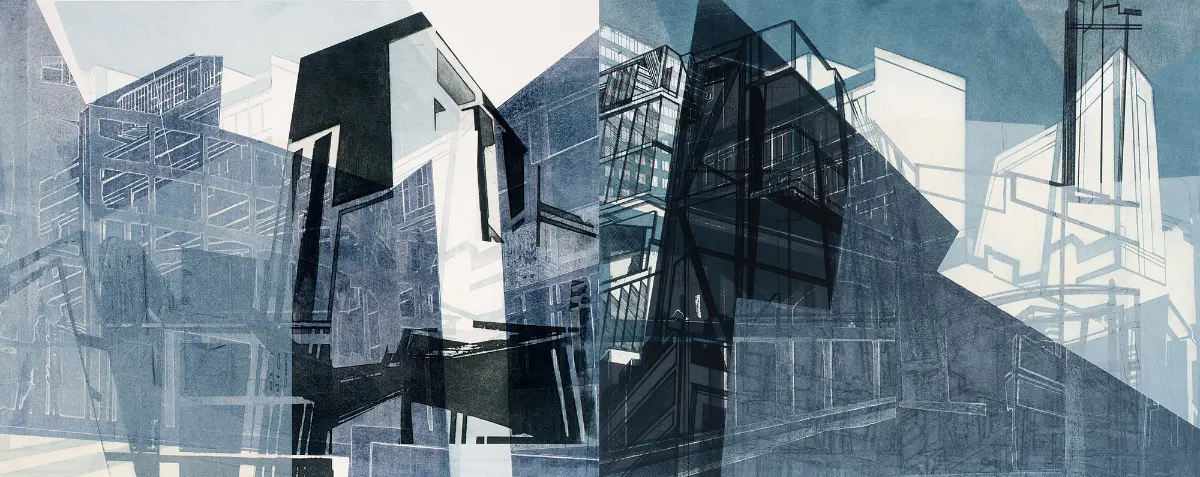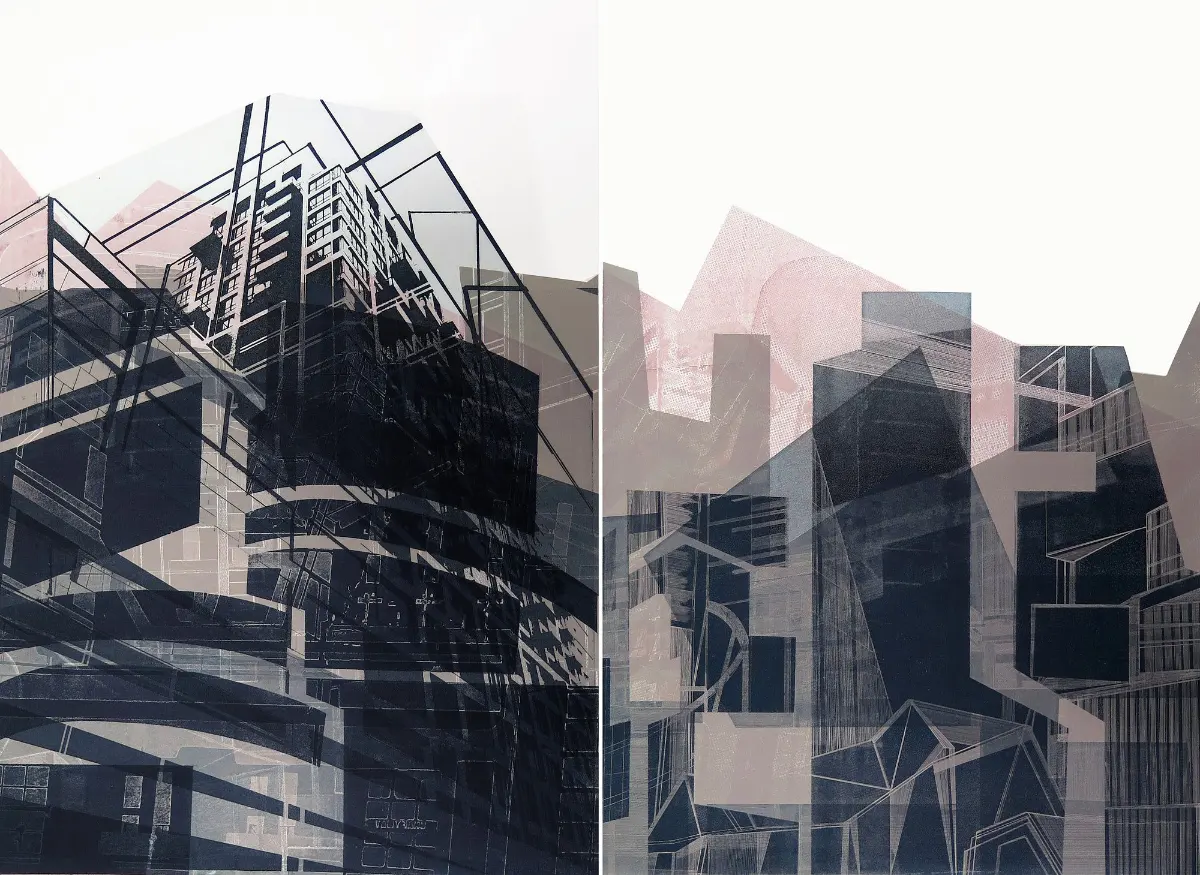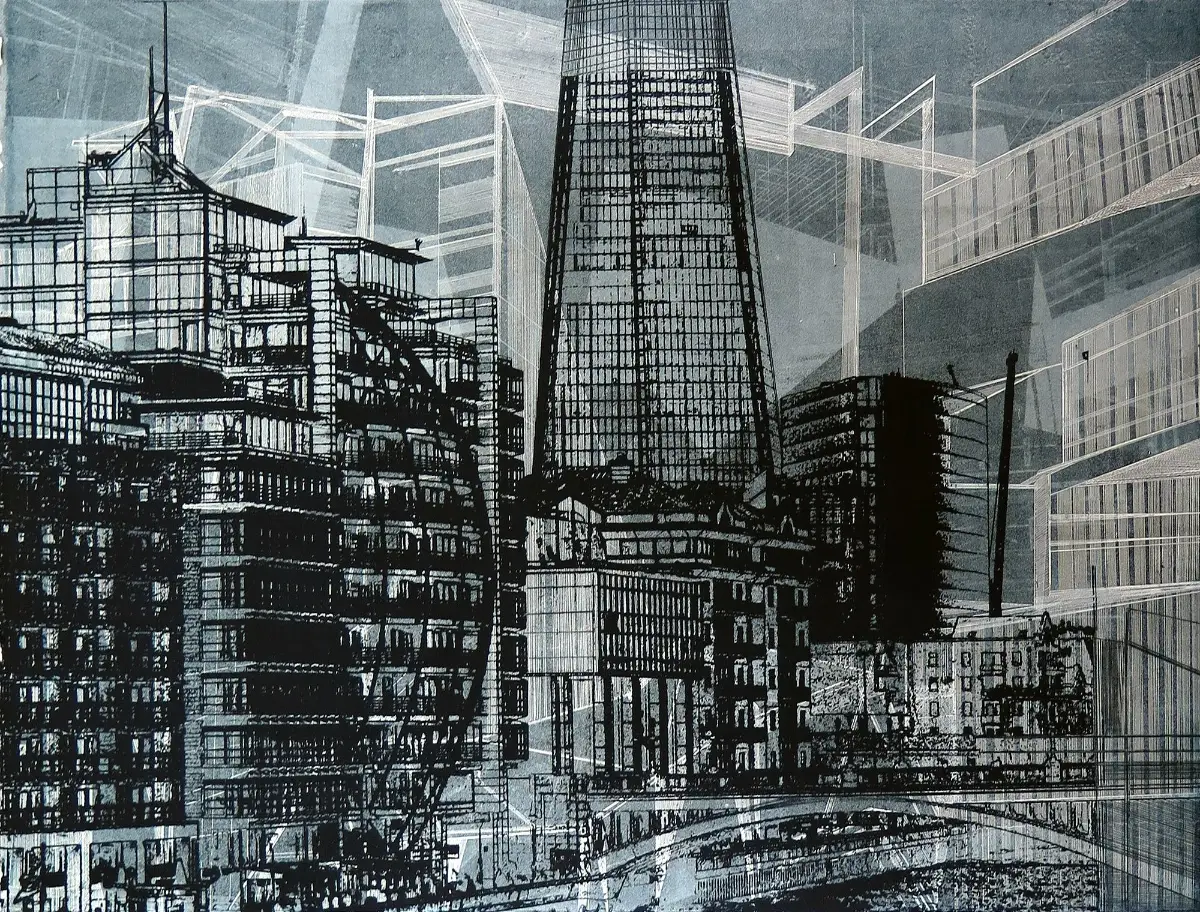obstructing views 2018
This body of work emerged from my short visit to London and Den Haag in December 2017 – January 2018. I spent most of the time walking through the city streets and found new vistas that transformed the way I saw each building. I was also fascinated by the London Building Acts of 1888 and 1894 that ruled that architects should not be allowed to build structures in London higher than a fireman's ladder, (roughly ten stories), to ensure the city's finest landmarks, specifically St Paul's Cathedral, were not overshadowed or obscured. This rule was not amended until 1956.
The streets of London became for me a game of chance; would I still be able to see St.Paul’s Cathedral from various distances? As I traversed the laneways, nearby streets and surrounding neighbourhoods, I would find myself looking back to check whether this iconic building was still in my line of vision and sure enough it was, much to my surprise! Can you imagine my excitement!
When in The Hague, once known as the Jugendstill or Art Nouveau capital of Holland, I was overwhelmed by this fast-developing place transforming into a true metropolitan city with an astonishing amount of (high rise) buildings recently completed or under construction. Architect, Richard Meier’s design for the City Hall became a focus for me. It’s pure whiteness, ‘a symbol of spatial clarity, purity and perfection,’ provided me the opportunity to consider depicting the importance of natural light in my etchings. Since Meier made it his priority and declared that it was paramount in the design of this particular space, I tried to capture through the printing process, the way light forms the transient shapes that became yet another space inside a space, if only for a short time. These images are constantly changing as the light shifts. Therefore, the original vista is obscured and distorted by the play of light bouncing off the building’s surface.
The 10 and 12-story horizontal office slabs diverge at an angle of 10.5 degrees to match the grain of the city; the slabs flank a large internal atrium that forms the new res publica of the municipality known as the Citizens Hall. The main library, with its concentric semi-circular plan, is located at the northwest end of the complex, where its dynamic form gives definition to the intersecting streets. These light, elegant structures in painted white steel are intended to appear as dematerialised screens subdividing the large perspectival volume into three different zones.
This new body of work is starting to now become more of a metaphor for life and people; even though there are no figures in my work. To obstruct a view, to become an obstruction, means to block. Pathways are often skewed or transcended into different vistas. The way we see the world and each other is therefore mirrored in the way I present the buildings to you. To salvage a view, one must therefore protect it in the same way we protect the people who are important to us. A glimpse of the sublime is possible if you choose to traverse in a certain direction; if you choose to look deeper.
